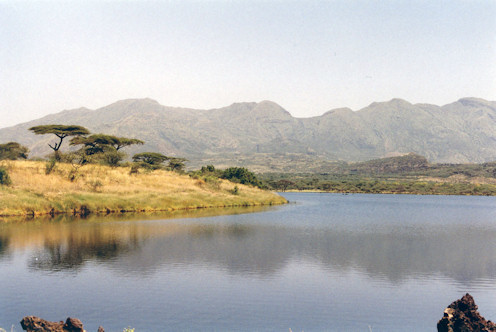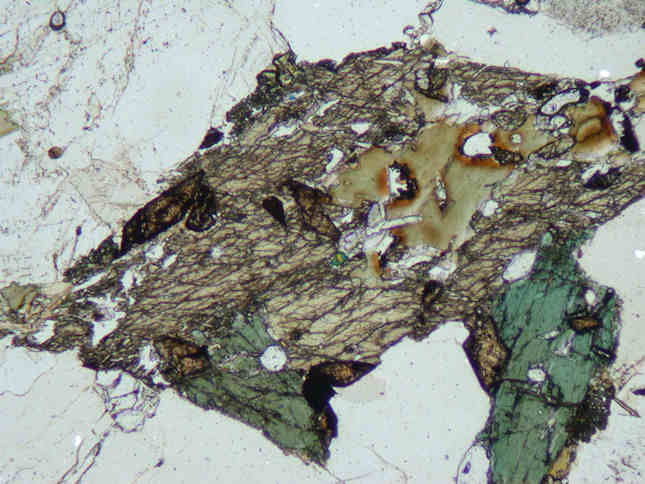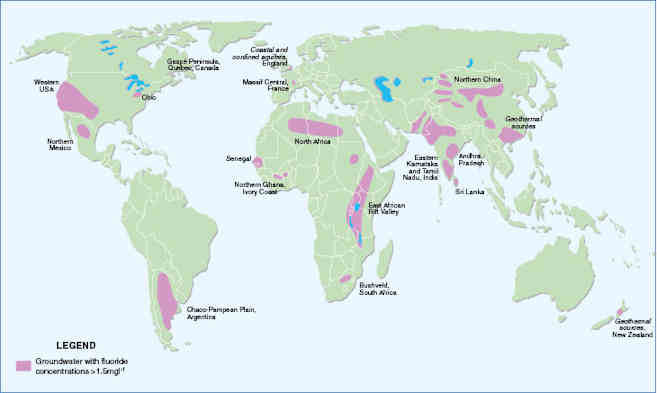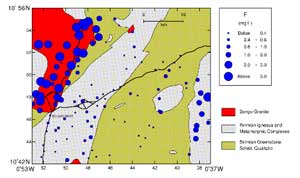Fluoride in groundwater
High-fluoride groundwaters are a recognised feature of a number of aquifers across the world.
Groundwater is an important source of drinking water and it is estimated that more than 200 million people worldwide are drinking groundwater with fluoride concentrations greater than the WHO guideline value of 1.5 mg/L. The majority of these cases occur in the developing world.
Groundwaters are much more vulnerable to fluoride enrichment than surface waters because of the greater impacts of water-rock reactions in aquifers. We have worked on fluoride occurrence in a number of aquifers in the UK and overseas, and with a number of research partners.
Fluoride and health
The optimum concentrations of fluoride in drinking water lie within a relatively narrow range.
Fluoride has long been found to have a beneficial effect on dental health, although when present in drinking water at concentrations much above the WHO guideline value (and national drinking water limit for most countries) of 1.5 mg/L, long term use can result in development of dental fluorosis or at its worst, crippling skeletal fluorosis.
The effects on health depend on a number of factors including dose from other sources of fluoride (toothpastes, food), age, gender and general health status.
High-fluoride groundwater provinces
High-fluoride groundwaters tend to be found in association with:
- crystalline rocks containing fluorine-rich minerals, especially granites and volcanic rocks
- shallow aquifers in arid areas experiencing strong evaporation
- sedimentary aquifers undergoing ion exchange
- inputs of geothermal water

The East African Rift Valley constitutes one of the most significant high-fluoride provinces in the world.
High-fluoride groundwaters, derived from combinations of reaction with young volcanic rocks, geothermal inputs and evaporation, occur alongside alkaline lakes (pH>8) with, in some cases, concentrations of dissolved fluoride up to 300 mg/L.
The association of high-fluoride groundwaters with granites and acidic volcanic rocks occurs because of the relative abundance in these rocks of high-fluoride minerals such as biotite, amphibole, apatite and fluorite.
Groundwaters are also typically Na-HCO3 waters with low concentrations of calcium, conditions under which the solubility of fluorite (CaF2), and hence also dissolved fluoride concentrations, is increased.

Mitigating fluoride problems
Resolving the fluoride problem in drinking water in developing countries remains a significant challenge.
Fluoride problems tend to occur in arid regions where resources are in any case limited and often of marginal quality (saline). Water treatment, using coagulation or adsorption/ion-exchange techniques, is technically feasible and has often been tried, although in developing countries has typically met with limited success.
Rates of success depend on efficacy of method, user acceptance, ease of maintenance, effectiveness of monitoring, degree of community participation and availability and cost of raw materials.
Related references
Nordstrom, D K, and Smedley, P L. 2022. Fluoride in Groundwater. (Ontario, Canada: The Groundwater Project/University of Guelph.) ISBN: 978-1-77470-019-8
Edmunds, W M, and Smedley, P L. 2013. Chapter 12: Fluoride in natural waters. In: Essentials of Medical Geology, Second Edition. Eds: Selinus, O, Alloway, B, Centeno, J A, Finkelman, R B, Fuge, R, Lindh, U and Smedley, P L. Springer.
Reddy, D V, Nagabhushanam, P, Sukhija, B S, Reddy, A G S, and Smedley, P L. 2010. Fluoride dynamics in the granitic aquifer of the Wailapally watershed, Nalgonda District, India. Chemical Geology, 269, 278-289.
Smedley, P L, Nicolli, H B, Macdonald, D M J, Barros, A J, and Tullio, J O. 2002. Hydrogeochemistry of arsenic and other inorganic constituents in groundwaters from La Pampa, Argentina. Applied Geochemistry, 17, 259–284.
Contact
Contact Dr Pauline Smedley for further information








